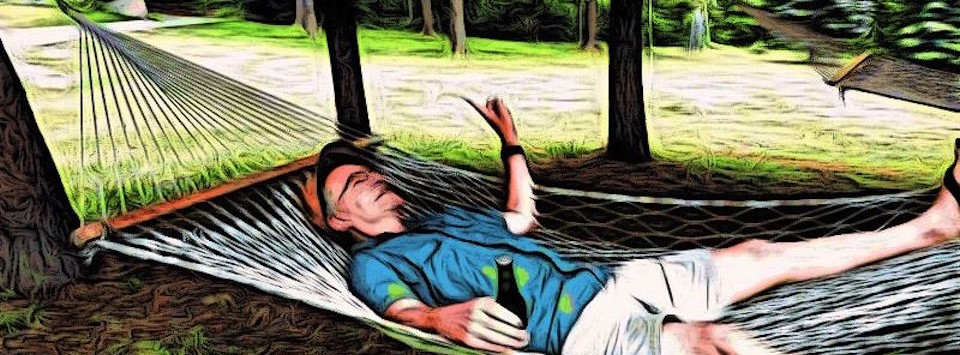A Technological Revival
During the late ’90s and early 2000s, there was an unlikely technological revival: airships.
The Hindenburg disaster sunk commercial airships for most of the twentieth century, leaving pretty much only the Goodyear blimps.
During the great economy of the ’90s, investors lined up to toss money at anything that popped up its head, which ended up turning out pretty badly for many of them. There were several airship startups among them.
Cargolifter AG, which opened its doors in ’96 was a German company with a plan to build truly colossal airship freight lifters. The initial plan was to build one with a 160 ton lifting capacity, but there was talk of constructing airships several times that large. The company spent a nutty amount of money constructing a hangar, called the Aerium, for the airships at an old airfield. The Aerium is, to this day, the fourth largest building in the world. You could fit an aircraft carrier inside with room to spare. (I don’t know why you’d want to, though).
Before Cargolifter AG couldn’t get anything other than a small test balloon built, though; they ran out of money and had to fold in 2002. The building was sold to a resort company, who turned it into a gargantuan indoor tropical park, featuring a swimming pool the size of a lake with waves and beaches, miles of jungle paths, spas, and so on and so forth. (Now there’s somewhere I can convince Maggie to go).
The Ukrainian company Aeros is a slightly more cheerful story. They already had a line of products to keep them in business, manufacturing hang-gliders and other ultra light craft. They’re sinking their budget into R&D for the Aeroscraft, a huge, sleek, rigid airship that looks like something out of Star Wars. It’s not a strictly lighter-than-air vehicle, and it also features huge vertical thrusters. They actually flew their prototype this year, after a decade of development.
Maggie and I love hot air balloons, so here’s keeping my fingers crossed we’ll get to start taking commercial airship flights soon enough.
A Different Kind of Motion
My family goes to a lot of movies. None of us are film buffs or anything like that, and I can’t say I’ve ever watched any of those film award shows, but we do end up going to the movies quite a bit. I’m nowhere near as knowledgeable about film technology as I am about ramps, but I do like to read about it.
 One of my favorite movies from the last decade or two was that King Kong remake. The big ape himself is done pretty spectacularly by a fellow named Andy Serkis, using motion capture.
One of my favorite movies from the last decade or two was that King Kong remake. The big ape himself is done pretty spectacularly by a fellow named Andy Serkis, using motion capture.
The way they do it is pretty nifty: they first put Serkis in this weird, full-body suit, made of latex or something like it. His face is then covered with a clear plastic mask filled with little holes. They mark his face with little dots through all the holes before removing it.
The little dots also cover his body suit. They film him moving around and doing his scenes. Then, in the computer, they use those little dots as…well, anchors, essentially, in order to layer the CGI over Serkis. They then build up the character using the dots and the framework between them, rather than animating the whole shebang themselves.
 There are a lot more dots on the face, too; that part is harder to animate, so it needs a lot more detail. It still takes a ton of work. Movies are just crazy expensive for a good reason, and not just because of the huge paychecks the actors get. There is a ton of work and expense put into it.
There are a lot more dots on the face, too; that part is harder to animate, so it needs a lot more detail. It still takes a ton of work. Movies are just crazy expensive for a good reason, and not just because of the huge paychecks the actors get. There is a ton of work and expense put into it.
King Kong isn’t the only motion capture character Serkis does, either: he did Gollum from The Lord of the Rings movies, and the main ape from the new Planet of the Apes movies, too, though I never saw those. (I never liked the original too much, mostly thanks to Charlton Heston. He’s an overacting ham. Now, if Planet of the Apes had had, say, Clint Eastwood…)
The technique has definitely evolved quite a bit since King Kong, but I don’t think I’ll ever be able to just dismiss old technology as boring. In fact, it’s often much more interesting.
Funiculars: A Slippery Slope
You normally want ramps to have a relatively low slope: it’s hardly going to cut back on the amount of work you need to do to get something to the top if it’s too steep.
 Unfortunately, it sometimes isn’t possible to construct a shallow ramp, usually due to terrain. You’ve still got to be able to get up to the top, though, which is where funiculars come into the picture.
Unfortunately, it sometimes isn’t possible to construct a shallow ramp, usually due to terrain. You’ve still got to be able to get up to the top, though, which is where funiculars come into the picture.
A funicular is essentially a pair of linked carts on rails going up and down a slope. Think elevator, but tilted to the side, and using each other as counterweights instead of having their own counterweights.
Funiculars take shockingly little power to operate, since you’re really only hauling up the weight of the load. In fact, some low-tech funiculars operate by filling water tanks at the top cart and draining them at the bottom, which pulls down the top cart and vice versa. They’re an extremely effective way to get around, and since they’re usually in the mountains, you usually get a great view as well, except when you go through a tunnel. You also get quite a few in mines.
 Depending on the amount of space available, the carts might have separate tracks, or they may share tracks. When they share track, there’s generally a split rail in the middle of the run that diverts the carts around each other.
Depending on the amount of space available, the carts might have separate tracks, or they may share tracks. When they share track, there’s generally a split rail in the middle of the run that diverts the carts around each other.
Unfortunately, a funicular was the site of the worst ramp-related disaster in history. (Yes, definitely worse than the countless groin injuries caused by ramps in sports.) The Kaprun disaster occurred on a large funicular leading up to a ski resort. One of the large trams used in the funicular caught fire while going up the tunnel. The resulting smoke billowed up through the tunnel, killing more than 150 people, largely through smoke inhalation.
The disaster turned out to be caused mostly by poor training and a fault in the tram car, but public confidence in funiculars remained shaken for some years. (Maggie wouldn’t let me ride the last one we saw, but I think I’ve finally got her convinced that they’re safe.)
Going Medieval on Our Ramps
I know I’ve kinda built up the idea about myself that I don’t care about medieval warfare, that I consider it an absurd waste of thought. And, well, generally speaking, you’d be right. I think it’s a distraction from the things that actually matter, like actual historical construction methods. I’m interested in how they put things together, not how they broke them.
That being said, some slightly interesting uses were found for ramps in war, specifically for the purposes of siegecraft.
 The first use was actually pre-medieval, though it was used on occasion in medieval times. Siege ramps are huge earthen ramps built right up a castle or city wall, a cliff face, or other positions of strength. They’re about as absurd as you’d think: the builders are going to come under constant attack by the people above, resulting in a wasteful loss of life. It was really only used when the besiegers grossly outnumbered the besieged, were otherwise unable to break through the enemy defenses, and had little care for loss of life on their side. The Romans used it a few times, as did a few of the smaller empires before them, and a few of the smaller kingdoms they conquered.
The first use was actually pre-medieval, though it was used on occasion in medieval times. Siege ramps are huge earthen ramps built right up a castle or city wall, a cliff face, or other positions of strength. They’re about as absurd as you’d think: the builders are going to come under constant attack by the people above, resulting in a wasteful loss of life. It was really only used when the besiegers grossly outnumbered the besieged, were otherwise unable to break through the enemy defenses, and had little care for loss of life on their side. The Romans used it a few times, as did a few of the smaller empires before them, and a few of the smaller kingdoms they conquered.
 The other use was in siege towers. These, at least, were constructed with a bit more safety in mind for the troops on your side: not that sending them over an enemy castle wall is, particularly, a safer idea. Siege towers, depending on the whim of the builder, were generally a bizarre hybrid of ramp, staircase, ladder, and watchtower, all built out of wood and canvas and stuck on wheels to roll right up to the castle walls, where troops could exit the tower directly onto those walls.
The other use was in siege towers. These, at least, were constructed with a bit more safety in mind for the troops on your side: not that sending them over an enemy castle wall is, particularly, a safer idea. Siege towers, depending on the whim of the builder, were generally a bizarre hybrid of ramp, staircase, ladder, and watchtower, all built out of wood and canvas and stuck on wheels to roll right up to the castle walls, where troops could exit the tower directly onto those walls.
They also usually had sheltered positions for archers to fire from. Still absurdly dangerous, of course, but you at least had some shelter from enemy arrows, at least until you got onto the wall. They still were vulnerable to fire, which medieval people loved to use on each other.
All in all: I prefer my ramps for actual construction purposes.






